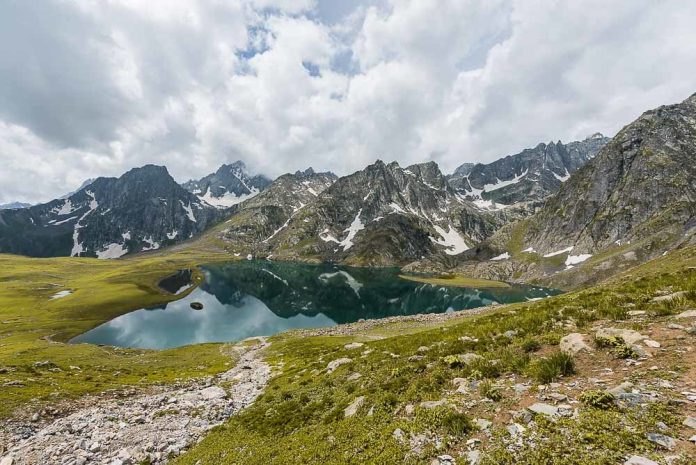Tarsar Marsar trek difficulty level: The Tarsar Marsar Trek is one of the most famous hiking trails in the beautiful Kashmir region. Trekking around the beautiful lakes and green meadows is the best way to learn to appreciate nature more. The best highlights of the trek are obviously Tarsar Lake and Marsar Lake. The Tarsar Marsar Trek is an extraordinary journey that lets you spend time in nature and learn about the culture of Kashmir. It is perfect for trekkers who want to see the beautiful scenery of Kashmir. The trek to Tarsar Marsar is moderately tough, but there are a few tricky sections on the trail. Some of the complex parts of the trek are the climb till the Tarsar lake, the crossing from Sundarsar to Marsar, and the steep descent on the last day.
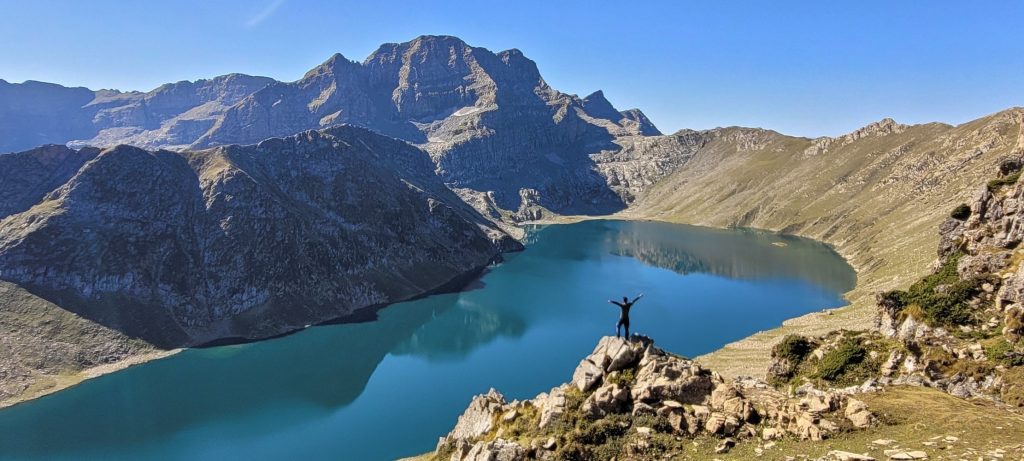
Tarsar Marsar trek difficulty level – high altitude and importance of acclimatisation
The average daytime temperature in July and August is between 15 to 18 degree Celsius. At night, the temperature can drop till 5 degrees Celsius. But at night, the temperature may drop to around -1 degrees Celsius. Even though this trek isn’t as hectic, you must be fit for it. Because of this, you should also be ready for high altitudes. The trek’s highest point is at Marsar Lake, about 13,165 ft (4,013 m) above sea level. Because of this, it is essential to get acclimated to the high altitude. The entire trek distance is approximately 48 Km, and the trek duration will be around 30+ hours. Since trekking can be challenging on the mind and the body, it’s vital to work on your fitness before the trek.
Acclimatization is a biological process involving the blood carrying more oxygen and making more red blood cells. This lets the person stop over-breathing and regain their heart rate. If a person stays at an altitude of 13,100 ft (3,992 m) or higher for a long time, the number of red blood cells in their blood may double. Hypoxia is a disease in which the body is exposed to air with very little oxygen. When we go above 11,000 ft (3,352 m), we are at risk of hypoxia. Acclimatization is necessary so that the trekker’s body gets used to the altitude.
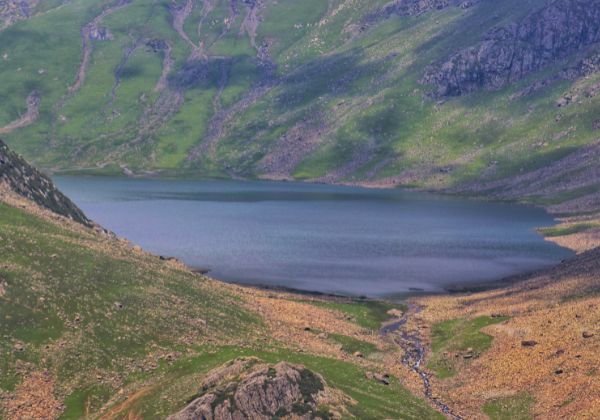
Problematic factors to consider for the Tarsar Marsar Trek
The Tarsar Marsar Trek is a beautiful but challenging trek in Kashmir. Some of the problematic factors to consider for this trek are:
- Weather: The weather in this region can be unpredictable and harsh, especially during the monsoon season. Heavy rainfall and landslides can make the trek difficult and dangerous.
- Altitude: The Tarsar Marsar Trek reaches an altitude of over 13,000 ft (3,962 m), which can cause altitude sickness. It’s important to acclimatize properly and stay hydrated to avoid this.
- Terrain: The terrain of this trek is varied and can be challenging, with steep ascents and descents, rocky paths, and river crossings. Trekking poles can be helpful for stability.
- Wildlife: The area is home to several wild animals, including wild dogs, bears, leopards, and snakes. Trekkers need to take precautions such as making noise while trekking, avoiding hiking alone, stay with the group and on encountering a wild life, call for help and slowly back off.
- Limited facilities: The trek is remote, and there are limited facilities en route. Trekkers need to be self-sufficient and carry all necessary supplies, including food, water, and camping gear.
- Political situation: The Kashmir region has experienced political unrest in the past, and it’s important to keep up-to-date with the current situation and follow local guidelines and advisories.
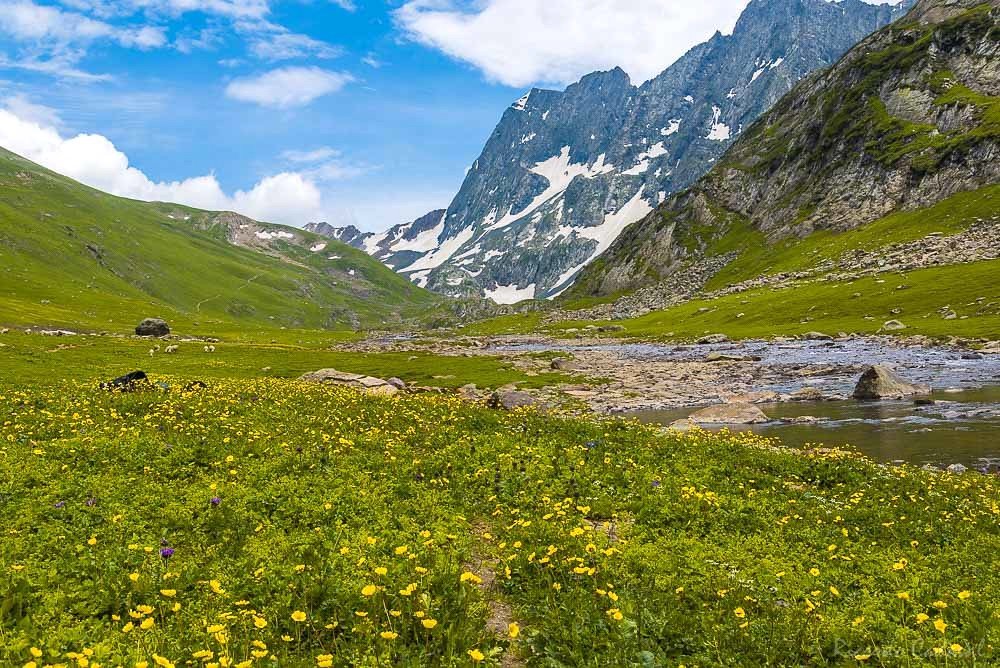
Most challenging trails on the Tarsar Marsar trek:
- Aru to Lidderwat: The trail from Aru to Lidderwat is a 12 km uphill trek that takes around 6-7 hours to complete. The trail is steep, and the altitude gain is around 2,500 ft (762 m) , making it physically demanding. The trail passes through dense forests and several river crossings, which can be challenging, especially during the monsoon season when the water levels are high.
- Shekwas to Tarsar: The trail from Shekwas to Tarsar is a 6 km uphill trek that takes around 4-5 hours to complete. The trail is steep and involves a climb of around 2,500 ft (762 m). The trail passes through a rocky terrain, and the trail is not well marked, which can be challenging for beginners.
- Tarsar to Marsar: The trail from Tarsar to Marsar is a 7 km trek that takes around 4-5 hours to complete. The trail involves a steep climb of around 1,500 feet to reach Marsar lake. The trail passes through boulder fields and rocky terrain, which can be physically demanding.
- Marsar to Homwas: The trail from Marsar to Homwas is a 12 km downhill trek that takes around 6-7 hours to complete. The trail is steep and involves a descent of around 3,500 ft (1066 m). The trail passes through a dense forest and several river crossings, which can be challenging, especially during the monsoon season.
- Homwas to Aru: The trail from Homwas to Aru is a 11 km downhill trek that takes around 5-6 hours to complete. The trail is steep and involves a descent of around 2,500 feet. The trail passes through a rocky terrain, and descend are more challenging and tricky than ascents. Hence a proper hiking stick is required, as the chances of falling/slipping etc is higher which can be challenging for beginners.
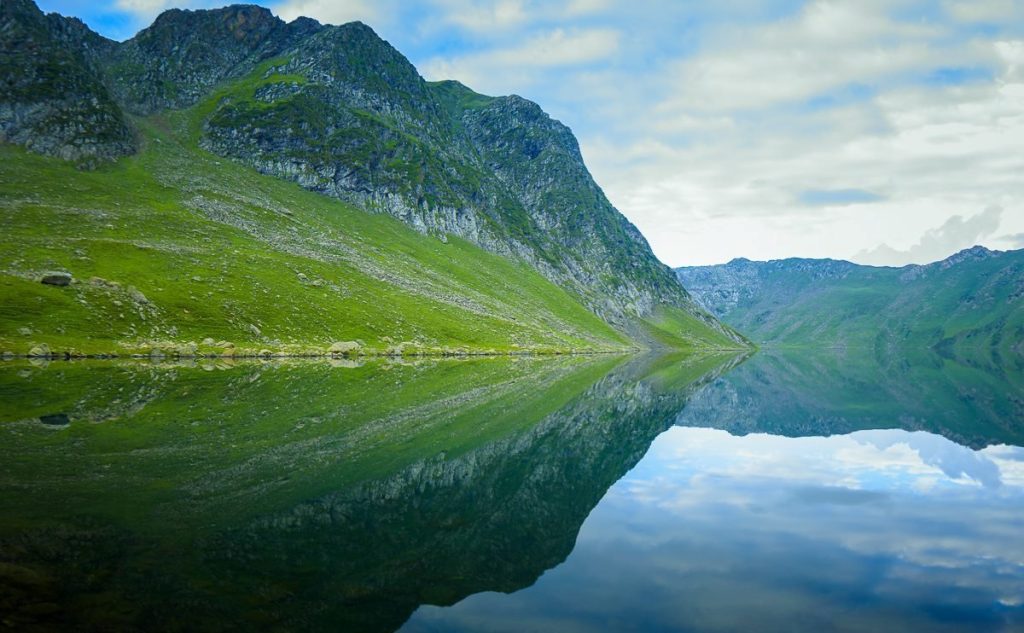
Tarsar Marsar trek difficulty level summarized:
| Day | Trek Details | Distance | Gradient | Altitude Gain/Loss |
| 1 | Aru to Lidderwat | 12 km | Steep uphill | Altitude Gain: 2,500 ft |
| 2 | Lidderwat to Shekawas | 10 km | Mostly flat with a gradual ascent | Altitude Gain: 500 ft (762 m) |
| 3 | Shekawas to Tarsar | 6 km | Steep uphill | Altitude Gain: 2,500 ft (762 m) |
| 4 | Tarsar to Marsar via Shekwas | 7 km | Steep uphill and downhill | Altitude Gain: 1,500 ft (457 m) |
| 5 | Marsar to Homwas | 12 km | Steep downhill | Altitude Loss: 3,500 ft (1066 m) |
| 6 | Homwas to Aru | 11 km | Steep downhill | Altitude Loss: 2,500 ft (762 m) |
Note: The gradient mentioned in the table is an approximation and may vary depending on the actual trail conditions.
Tips for Overcoming the Challenges
The trekking trails at high altitudes are dangerous and have a lot of steep terrain and boulder sections. There are a lot of risks involved. To get through this, you’ll need the proper training and a determined mindset.
Trekking with a heavy bag on your back can be very tiring, especially if you have to do it every day for 6 to 8 hours. Carry a small day bag which has water, rain gear, a jacket, camera and some eatables. You can give the bigger bag to the porter. Going hiking in a group is better than going alone. The trek ratio at TrekNomads is 10:1. It is also important for the trekkers to remember that not all follow the same speed, and some walk more slowly than others. Help each other out, and don’t leave anyone behind. Trekking in a group has a lot of benefits, like being able to help each other in times of trouble or an unplanned disaster.
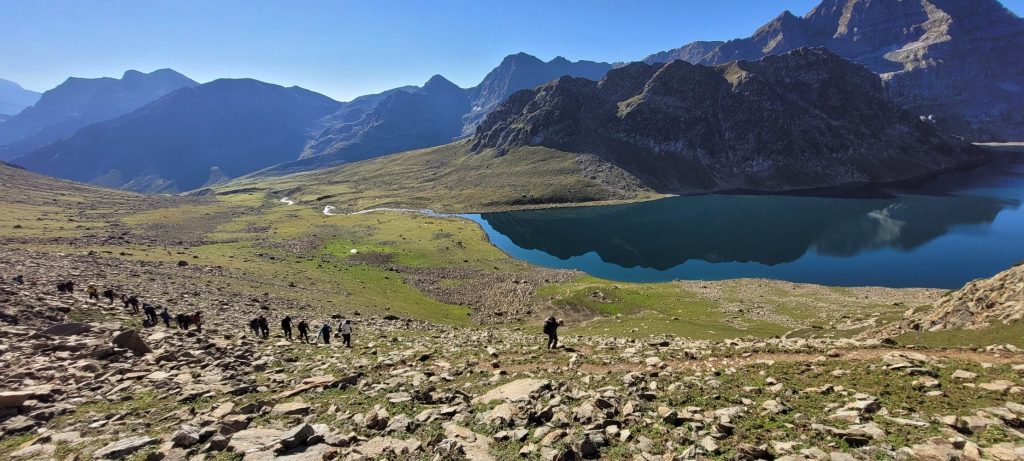
Tarsar Marsar trek difficulty level: Final thoughts
The Tarsar Marsar trek is of moderate to intermediate difficulty level, with only a few challenging spots along the way. It is essential that you keep in mind the challenging aspects and be prepared for them. The usual green and lush forest will be transformed into a snowy winter beauty with snow capped mountains. The Tarsar Marsar trek is best for experienced trekkers as well as beginners.
The trails mentioned above are physically demanding, involve steep ascends and descends, and require trekkers to be well prepared and cautious while navigating through them. Trekkers need to carry all necessary supplies, including food, water, and camping gear, and plan their itinerary carefully to avoid any health issues or adverse weather conditions.
Read more:
How to get fit for the himalayan trek
